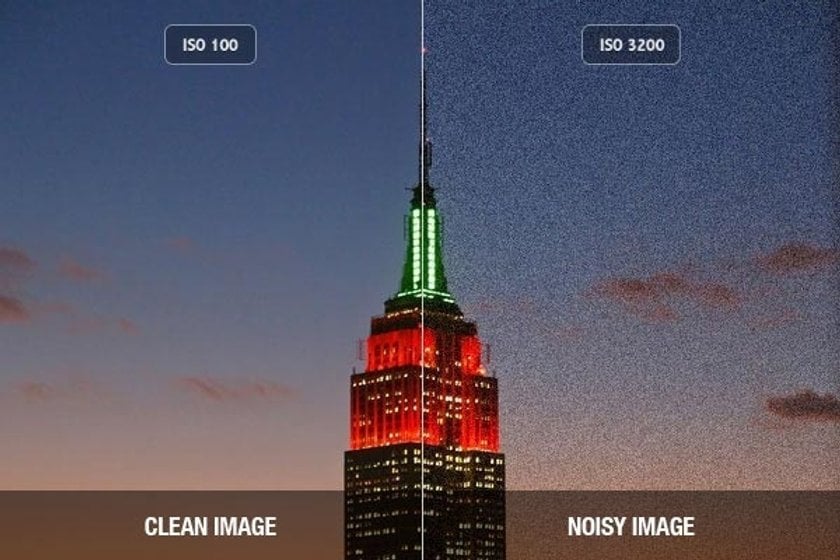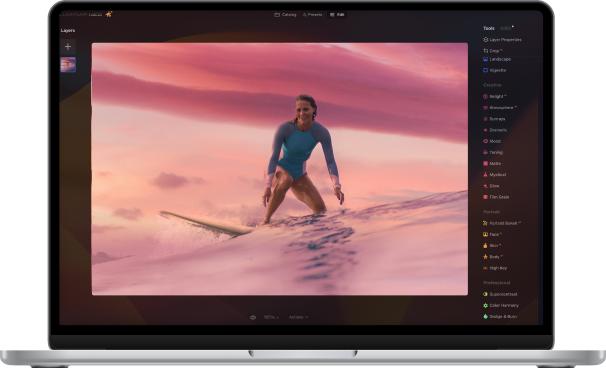What is ISO in Photography
April 18
12 min. to read
ISO sensitivity is a standard set by the International Organization for Standardization (ISO) that represents a camera's sensitivity to light as a numerical value. A higher ISO number means greater sensitivity to light, improving the camera's ability to capture images in lower light conditions.
What is ISO?
ISO is the sensitivity of a camera's digital sensor or film to light. Users often mistakenly associate it with the International Organization for Standardization, although there is no direct link between them. It first appeared in the lexicon of film manufacturers but is now used in digital cameras.
To put it simply, the level of sensitivity of your camera sensor to available light is what we call ISO. To explain further, a lower ISO number means the camera sensor is less sensitive to light its receiving while a higher ISO number means the sensor is highly sensitive to light. So, the answer to the question, "What does ISO measure?" would be "sensitivity".
However, remember that the sensitivity can vary between digital sensors as there are a plethora available in the market. Still, DSLR camera sensors aren’t that complicated and the same settings generally apply.
The sensors in a camera are the most expensive and important component, which allows it to process light into an image. You can capture images in a low-light environment when your ISO is set to higher numbers. But remember, higher ISO levels lead to grain and noise penetration in your pictures, which doesn’t quite look nice when you zoom in or print a large version of them.
If you don’t understand what ISO is and how it works, then you might find it difficult to take good pictures. After all, the ISO setting is one of the three critical components of exposure control in photography, alongside aperture (f/stop) and shutter speed. These elements work together to determine the final exposure of an image. Every photographer, no matter how experienced they are, should be well aware of what it is. This would allow you to get the most out of your camera so that you can produce stunning images.

This article is written for beginners in digital photography who want to improve ISO understanding which is why we did our best to explain ISO in photography in layman terms. However, before expressing interest in ISO, you should have know-how on how DSLR cameras work. With that being said, let’s get started:
What Does ISO Stand for Photography
ISO stands for International Organization for Standardization in photography; it measures the sensitivity of the camera's sensor to light, affecting the brightness of images. Take a look at a life example:

ISO 100 and ISO 3200 Comparison
You can see that a higher ISO number yields more noise and graininess whereas a lower ISO number results in a smooth and freckle-free image.
Getting to Know ISO in Detail
Every camera has a basic ISO number which produces the highest image quality, without adding graininess or noise to the picture. These ISO numbers vary depending on the camera manufacturers.
For example, Nikon cameras, such as the NikonD5100, has an ISO base of 200. Canon cameras, on the other hand, have an ISO of 100, which is the minimum ISO number. Usually, most professional photographers stick with the minimal ISO number and generally prefer not to stray too far from ISO 800 unless absolutely needed. This is because going beyond ISO 800 would add graininess to an image, inevitably resulting in loss of image quality.
ISO numbers have a two-multiple increment in every value, meaning that every ISO number increases by the power of two. This is why the general ISO sequence is: 100, 200, 400, 800, 1600, 3200, 6400 etc.
In simple terms, each step between these numbers doubles the sensitivity of the sensor. So, for instance, ISO 1600 is sixteen times more sensitive to light than ISO 100. A photo at a value of 400 will be twice brighter than at 200, which in turn will be twice as bright as at 100, and so on. You should know that numbers affect how fast a camera can capture light to produce an image.
Common values (sometimes called ISO speed):
- ISO 200 would take 1/2 of a second
- ISO 400 would take 1/4 of a second
- ISO 800 would take 1/8 of a second
- ISO 1600 would take 1/16 of a second
- ISO 3200 would take 1/32 of a second
Choosing the right ISO speed can mean a world of difference in photography. For example, if you choose a lower ISO number in low-light conditions, it would take time to produce the image which can make it blurry. But if you have a tripod, the same setting would result in a beautiful, soft image with proper exposure (if it's landscape you're portraying). However, a higher ISO number (preferably not more than 800) would produce a crisp image and can help freeze motion since it takes less time to capture the image.
How to Change ISO on a Camera?
The parameters will be different for each device. A small guide on how to change ISO is written below:
- Find a setting that you can use to select the desired value. You should not choose the automatic mode. Manual Shooting, Shutter Priority, or Aperture Priority would work best.
- If your camera level is not too high, you will need to find the right section in the menu, and then select the desired value.
- Special buttons for manual adjustment are provided in higher-class cameras.
Some devices have special "HI" and "LO" icons added that allow the user to significantly increase the native ISO settings. We do not recommend using them. If you are in doubt about how to change the ISO setting, refer to your camera's manual.
ISO and Exposure: Using ISO the Right Way
Newcomers often ask how to use ISO correctly. Generally, ISO controls the amount of light that enters your camera. Here are some general tips on how to calculate the correct ISO and improve image quality:
Use ISO 100 in well-lit conditions, whenever possible.
Avoid using more than ISO 800 in low-light conditions.
Select the aperture value that allows you to achieve the desired depth of field.
Choose a base ISO (the lowest possible) and set the shutter speed to whatever setting provides the correct exposure.
If the object is blurry, gradually increase the speed and use a shorter shutter speed. Continue adjusting until a clear image appears.
Using the lowest ISO setting results in a more detailed photograph and yields the highest image quality. Many photographers take photos with the camera’s base ISO of 100 or even 200 in low-light conditions, using a tripod to balance the time it takes for the camera to capture the image with correct exposure. However, these settings, with the lowest ISO, are typically reserved for landscapes. They should not be applied to portraiture, as doing so could frustrate the subject. In such cases, you should use a higher ISO.
What if you want to capture something in the dark and need to increase the ISO numbers (above 800)? In this case, it is advisable to sacrifice some image quality to get the shot. High ISO settings will result in much more noise.
Conclusion
Now you know why you need ISO and how to set it correctly. Try it now and get the best possible photo quality!





